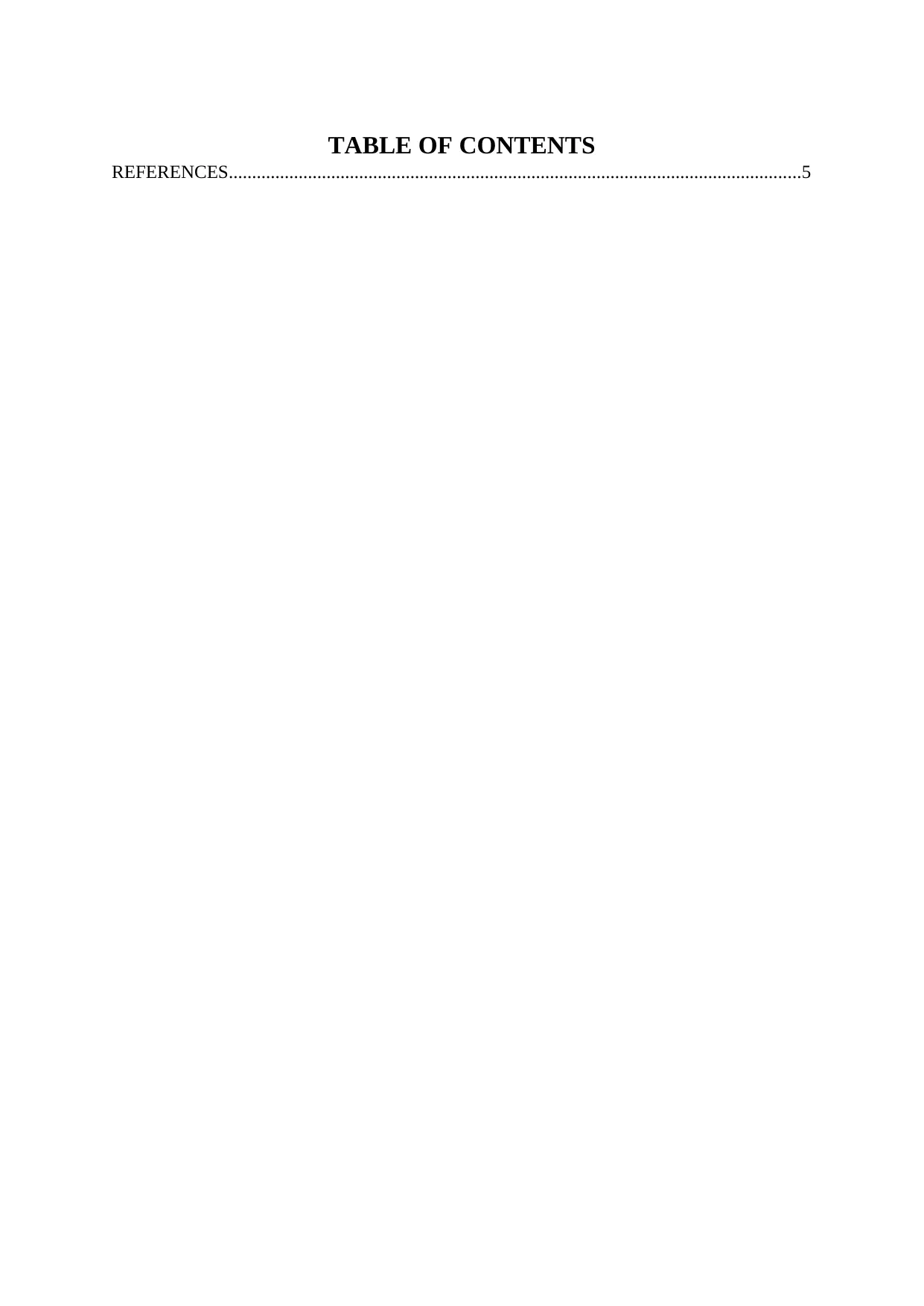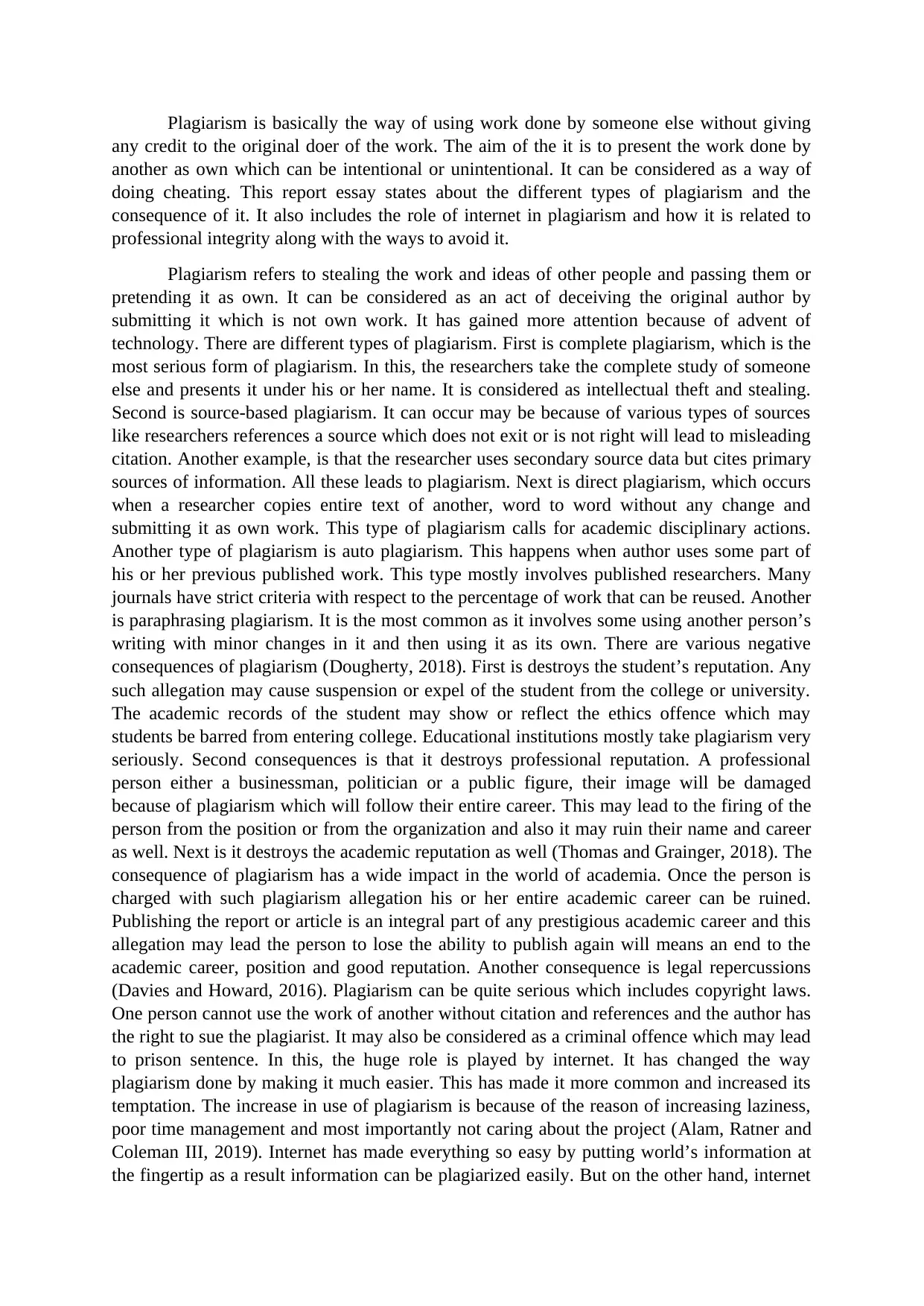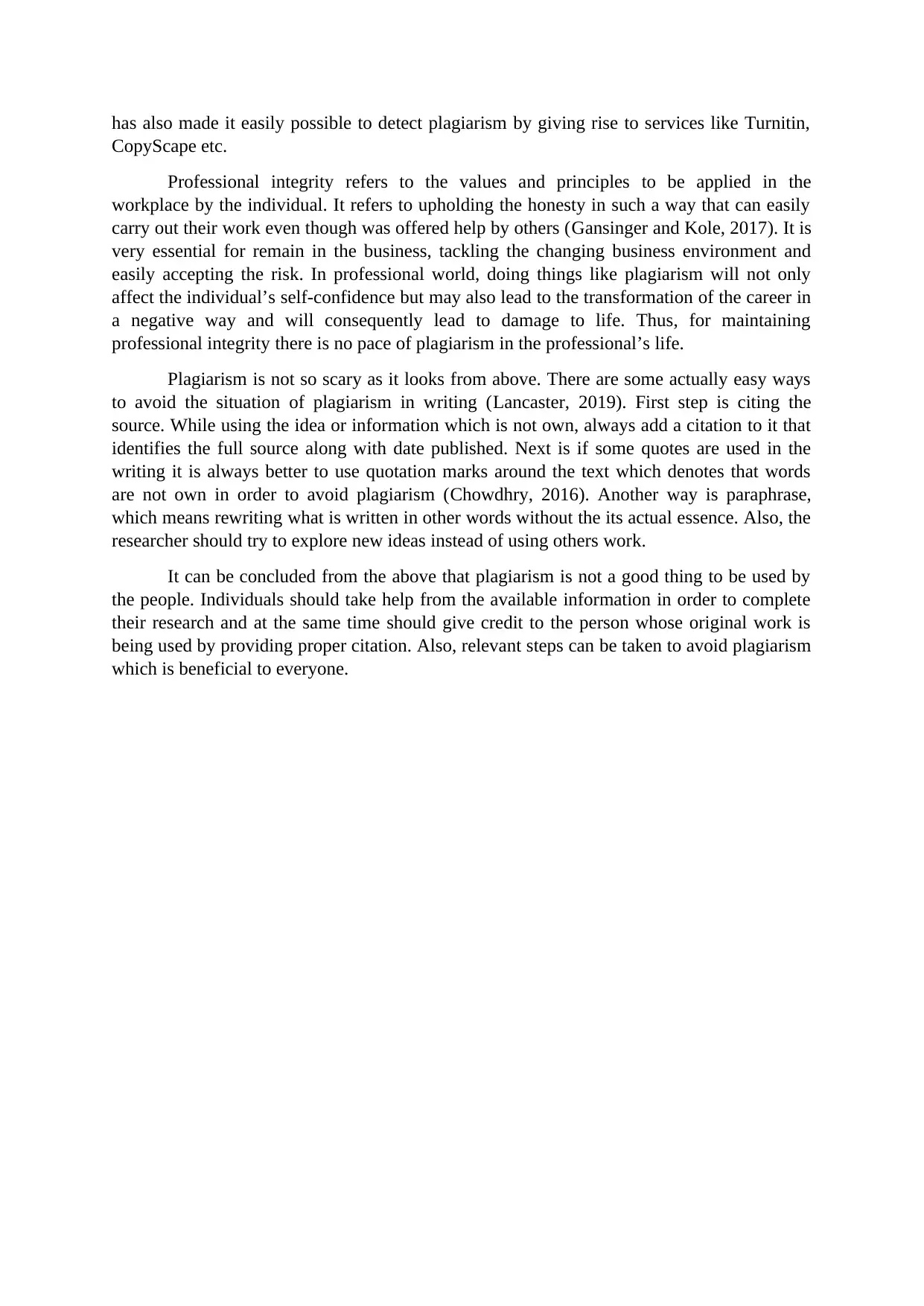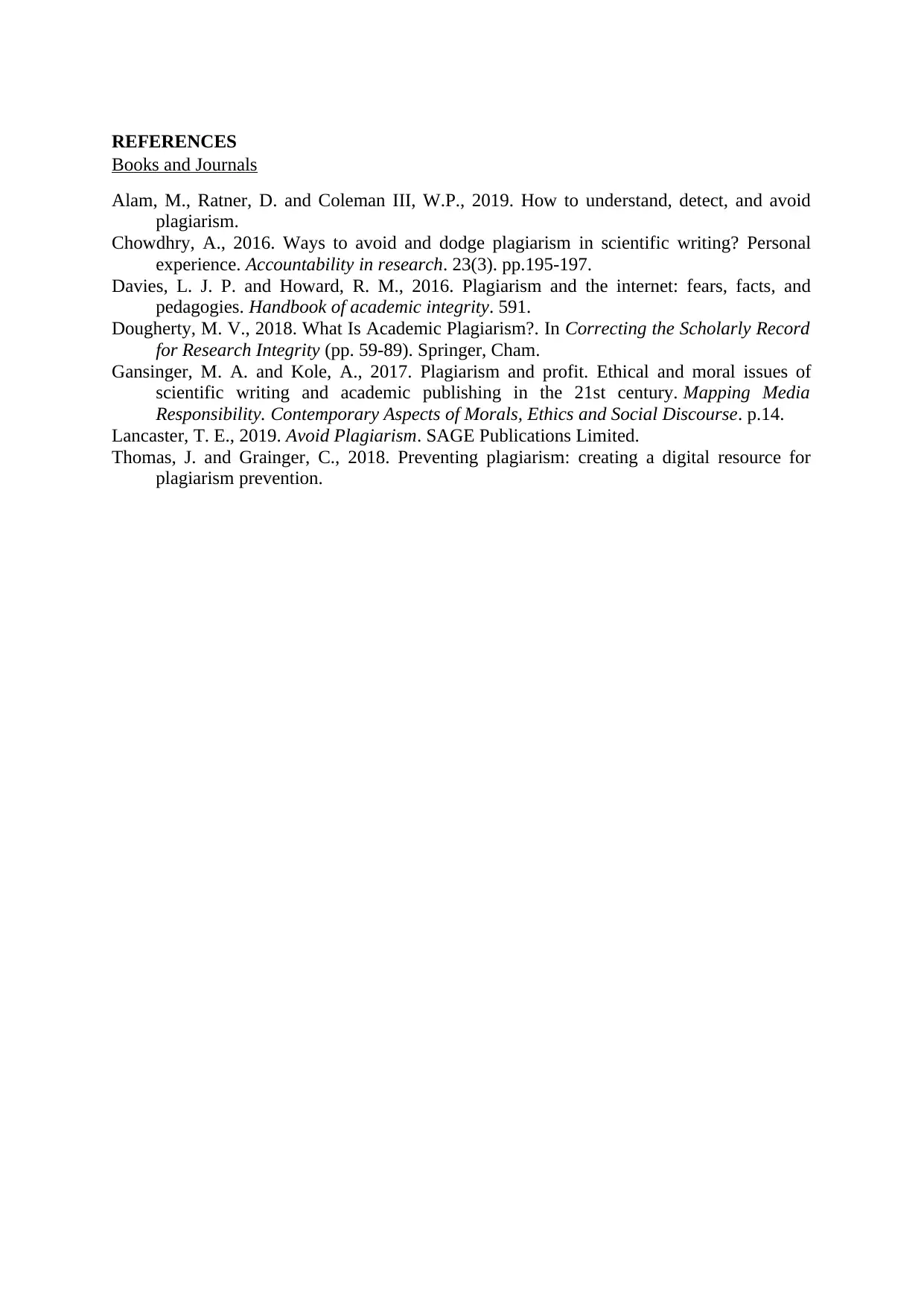Plagiarism in Professional Skills for Business and Finance: A Report
VerifiedAdded on 2023/01/12
|5
|1351
|83
Report
AI Summary
This report delves into the multifaceted issue of plagiarism, specifically within the context of professional skills in business and finance. It begins by defining plagiarism and highlighting its detrimental effects, including damage to reputation and potential legal repercussions. The report then categorizes different types of plagiarism, such as complete, source-based, direct, auto, and paraphrasing plagiarism, providing clear examples of each. Furthermore, it outlines the negative consequences of plagiarism, emphasizing its impact on both academic and professional careers, along with legal ramifications. The role of the internet in facilitating plagiarism is also examined, alongside the importance of professional integrity and how plagiarism undermines it. Finally, the report offers practical strategies for avoiding plagiarism, including proper citation, the use of quotation marks, and effective paraphrasing techniques, concluding with the importance of original thought and academic honesty.

Professional skills for business
and finance: PLAGIARISM
and finance: PLAGIARISM
Paraphrase This Document
Need a fresh take? Get an instant paraphrase of this document with our AI Paraphraser

TABLE OF CONTENTS
REFERENCES...........................................................................................................................5
REFERENCES...........................................................................................................................5

Plagiarism is basically the way of using work done by someone else without giving
any credit to the original doer of the work. The aim of the it is to present the work done by
another as own which can be intentional or unintentional. It can be considered as a way of
doing cheating. This report essay states about the different types of plagiarism and the
consequence of it. It also includes the role of internet in plagiarism and how it is related to
professional integrity along with the ways to avoid it.
Plagiarism refers to stealing the work and ideas of other people and passing them or
pretending it as own. It can be considered as an act of deceiving the original author by
submitting it which is not own work. It has gained more attention because of advent of
technology. There are different types of plagiarism. First is complete plagiarism, which is the
most serious form of plagiarism. In this, the researchers take the complete study of someone
else and presents it under his or her name. It is considered as intellectual theft and stealing.
Second is source-based plagiarism. It can occur may be because of various types of sources
like researchers references a source which does not exit or is not right will lead to misleading
citation. Another example, is that the researcher uses secondary source data but cites primary
sources of information. All these leads to plagiarism. Next is direct plagiarism, which occurs
when a researcher copies entire text of another, word to word without any change and
submitting it as own work. This type of plagiarism calls for academic disciplinary actions.
Another type of plagiarism is auto plagiarism. This happens when author uses some part of
his or her previous published work. This type mostly involves published researchers. Many
journals have strict criteria with respect to the percentage of work that can be reused. Another
is paraphrasing plagiarism. It is the most common as it involves some using another person’s
writing with minor changes in it and then using it as its own. There are various negative
consequences of plagiarism (Dougherty, 2018). First is destroys the student’s reputation. Any
such allegation may cause suspension or expel of the student from the college or university.
The academic records of the student may show or reflect the ethics offence which may
students be barred from entering college. Educational institutions mostly take plagiarism very
seriously. Second consequences is that it destroys professional reputation. A professional
person either a businessman, politician or a public figure, their image will be damaged
because of plagiarism which will follow their entire career. This may lead to the firing of the
person from the position or from the organization and also it may ruin their name and career
as well. Next is it destroys the academic reputation as well (Thomas and Grainger, 2018). The
consequence of plagiarism has a wide impact in the world of academia. Once the person is
charged with such plagiarism allegation his or her entire academic career can be ruined.
Publishing the report or article is an integral part of any prestigious academic career and this
allegation may lead the person to lose the ability to publish again will means an end to the
academic career, position and good reputation. Another consequence is legal repercussions
(Davies and Howard, 2016). Plagiarism can be quite serious which includes copyright laws.
One person cannot use the work of another without citation and references and the author has
the right to sue the plagiarist. It may also be considered as a criminal offence which may lead
to prison sentence. In this, the huge role is played by internet. It has changed the way
plagiarism done by making it much easier. This has made it more common and increased its
temptation. The increase in use of plagiarism is because of the reason of increasing laziness,
poor time management and most importantly not caring about the project (Alam, Ratner and
Coleman III, 2019). Internet has made everything so easy by putting world’s information at
the fingertip as a result information can be plagiarized easily. But on the other hand, internet
any credit to the original doer of the work. The aim of the it is to present the work done by
another as own which can be intentional or unintentional. It can be considered as a way of
doing cheating. This report essay states about the different types of plagiarism and the
consequence of it. It also includes the role of internet in plagiarism and how it is related to
professional integrity along with the ways to avoid it.
Plagiarism refers to stealing the work and ideas of other people and passing them or
pretending it as own. It can be considered as an act of deceiving the original author by
submitting it which is not own work. It has gained more attention because of advent of
technology. There are different types of plagiarism. First is complete plagiarism, which is the
most serious form of plagiarism. In this, the researchers take the complete study of someone
else and presents it under his or her name. It is considered as intellectual theft and stealing.
Second is source-based plagiarism. It can occur may be because of various types of sources
like researchers references a source which does not exit or is not right will lead to misleading
citation. Another example, is that the researcher uses secondary source data but cites primary
sources of information. All these leads to plagiarism. Next is direct plagiarism, which occurs
when a researcher copies entire text of another, word to word without any change and
submitting it as own work. This type of plagiarism calls for academic disciplinary actions.
Another type of plagiarism is auto plagiarism. This happens when author uses some part of
his or her previous published work. This type mostly involves published researchers. Many
journals have strict criteria with respect to the percentage of work that can be reused. Another
is paraphrasing plagiarism. It is the most common as it involves some using another person’s
writing with minor changes in it and then using it as its own. There are various negative
consequences of plagiarism (Dougherty, 2018). First is destroys the student’s reputation. Any
such allegation may cause suspension or expel of the student from the college or university.
The academic records of the student may show or reflect the ethics offence which may
students be barred from entering college. Educational institutions mostly take plagiarism very
seriously. Second consequences is that it destroys professional reputation. A professional
person either a businessman, politician or a public figure, their image will be damaged
because of plagiarism which will follow their entire career. This may lead to the firing of the
person from the position or from the organization and also it may ruin their name and career
as well. Next is it destroys the academic reputation as well (Thomas and Grainger, 2018). The
consequence of plagiarism has a wide impact in the world of academia. Once the person is
charged with such plagiarism allegation his or her entire academic career can be ruined.
Publishing the report or article is an integral part of any prestigious academic career and this
allegation may lead the person to lose the ability to publish again will means an end to the
academic career, position and good reputation. Another consequence is legal repercussions
(Davies and Howard, 2016). Plagiarism can be quite serious which includes copyright laws.
One person cannot use the work of another without citation and references and the author has
the right to sue the plagiarist. It may also be considered as a criminal offence which may lead
to prison sentence. In this, the huge role is played by internet. It has changed the way
plagiarism done by making it much easier. This has made it more common and increased its
temptation. The increase in use of plagiarism is because of the reason of increasing laziness,
poor time management and most importantly not caring about the project (Alam, Ratner and
Coleman III, 2019). Internet has made everything so easy by putting world’s information at
the fingertip as a result information can be plagiarized easily. But on the other hand, internet
⊘ This is a preview!⊘
Do you want full access?
Subscribe today to unlock all pages.

Trusted by 1+ million students worldwide

has also made it easily possible to detect plagiarism by giving rise to services like Turnitin,
CopyScape etc.
Professional integrity refers to the values and principles to be applied in the
workplace by the individual. It refers to upholding the honesty in such a way that can easily
carry out their work even though was offered help by others (Gansinger and Kole, 2017). It is
very essential for remain in the business, tackling the changing business environment and
easily accepting the risk. In professional world, doing things like plagiarism will not only
affect the individual’s self-confidence but may also lead to the transformation of the career in
a negative way and will consequently lead to damage to life. Thus, for maintaining
professional integrity there is no pace of plagiarism in the professional’s life.
Plagiarism is not so scary as it looks from above. There are some actually easy ways
to avoid the situation of plagiarism in writing (Lancaster, 2019). First step is citing the
source. While using the idea or information which is not own, always add a citation to it that
identifies the full source along with date published. Next is if some quotes are used in the
writing it is always better to use quotation marks around the text which denotes that words
are not own in order to avoid plagiarism (Chowdhry, 2016). Another way is paraphrase,
which means rewriting what is written in other words without the its actual essence. Also, the
researcher should try to explore new ideas instead of using others work.
It can be concluded from the above that plagiarism is not a good thing to be used by
the people. Individuals should take help from the available information in order to complete
their research and at the same time should give credit to the person whose original work is
being used by providing proper citation. Also, relevant steps can be taken to avoid plagiarism
which is beneficial to everyone.
CopyScape etc.
Professional integrity refers to the values and principles to be applied in the
workplace by the individual. It refers to upholding the honesty in such a way that can easily
carry out their work even though was offered help by others (Gansinger and Kole, 2017). It is
very essential for remain in the business, tackling the changing business environment and
easily accepting the risk. In professional world, doing things like plagiarism will not only
affect the individual’s self-confidence but may also lead to the transformation of the career in
a negative way and will consequently lead to damage to life. Thus, for maintaining
professional integrity there is no pace of plagiarism in the professional’s life.
Plagiarism is not so scary as it looks from above. There are some actually easy ways
to avoid the situation of plagiarism in writing (Lancaster, 2019). First step is citing the
source. While using the idea or information which is not own, always add a citation to it that
identifies the full source along with date published. Next is if some quotes are used in the
writing it is always better to use quotation marks around the text which denotes that words
are not own in order to avoid plagiarism (Chowdhry, 2016). Another way is paraphrase,
which means rewriting what is written in other words without the its actual essence. Also, the
researcher should try to explore new ideas instead of using others work.
It can be concluded from the above that plagiarism is not a good thing to be used by
the people. Individuals should take help from the available information in order to complete
their research and at the same time should give credit to the person whose original work is
being used by providing proper citation. Also, relevant steps can be taken to avoid plagiarism
which is beneficial to everyone.
Paraphrase This Document
Need a fresh take? Get an instant paraphrase of this document with our AI Paraphraser

REFERENCES
Books and Journals
Alam, M., Ratner, D. and Coleman III, W.P., 2019. How to understand, detect, and avoid
plagiarism.
Chowdhry, A., 2016. Ways to avoid and dodge plagiarism in scientific writing? Personal
experience. Accountability in research. 23(3). pp.195-197.
Davies, L. J. P. and Howard, R. M., 2016. Plagiarism and the internet: fears, facts, and
pedagogies. Handbook of academic integrity. 591.
Dougherty, M. V., 2018. What Is Academic Plagiarism?. In Correcting the Scholarly Record
for Research Integrity (pp. 59-89). Springer, Cham.
Gansinger, M. A. and Kole, A., 2017. Plagiarism and profit. Ethical and moral issues of
scientific writing and academic publishing in the 21st century. Mapping Media
Responsibility. Contemporary Aspects of Morals, Ethics and Social Discourse. p.14.
Lancaster, T. E., 2019. Avoid Plagiarism. SAGE Publications Limited.
Thomas, J. and Grainger, C., 2018. Preventing plagiarism: creating a digital resource for
plagiarism prevention.
Books and Journals
Alam, M., Ratner, D. and Coleman III, W.P., 2019. How to understand, detect, and avoid
plagiarism.
Chowdhry, A., 2016. Ways to avoid and dodge plagiarism in scientific writing? Personal
experience. Accountability in research. 23(3). pp.195-197.
Davies, L. J. P. and Howard, R. M., 2016. Plagiarism and the internet: fears, facts, and
pedagogies. Handbook of academic integrity. 591.
Dougherty, M. V., 2018. What Is Academic Plagiarism?. In Correcting the Scholarly Record
for Research Integrity (pp. 59-89). Springer, Cham.
Gansinger, M. A. and Kole, A., 2017. Plagiarism and profit. Ethical and moral issues of
scientific writing and academic publishing in the 21st century. Mapping Media
Responsibility. Contemporary Aspects of Morals, Ethics and Social Discourse. p.14.
Lancaster, T. E., 2019. Avoid Plagiarism. SAGE Publications Limited.
Thomas, J. and Grainger, C., 2018. Preventing plagiarism: creating a digital resource for
plagiarism prevention.
1 out of 5
Related Documents
Your All-in-One AI-Powered Toolkit for Academic Success.
+13062052269
info@desklib.com
Available 24*7 on WhatsApp / Email
![[object Object]](/_next/static/media/star-bottom.7253800d.svg)
Unlock your academic potential
Copyright © 2020–2025 A2Z Services. All Rights Reserved. Developed and managed by ZUCOL.





